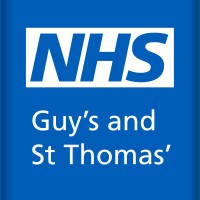
Manchester University NHS Foundation Trust Company Cyber Security Posture
mft.nhs.ukManchester University NHS Foundation Trust (MFT) is one of the largest acute Trusts in the UK, employing over 20,000 staff. We are responsible for running a family of nine hospitals across six separate sites, providing a wide range of services from comprehensive local general hospital care through to highly specialised regional and national services. We are the main provider of hospital care to approximately 750,000 people in Manchester and Trafford and the single biggest provider of specialised services in the North West of England. We are also the lead provider for a significant number of specialised services including Breast Care, Vascular, Cardiac, Respiratory, Urology Cancer, Paediatrics, Women’s Services, Ophthalmology and Genomic Medicine. Our vision is to improve the health and quality of life of our diverse population by building an organisation that: - Excels in quality, safety, patient experience, research, innovation and teaching - Attracts, develops and retains great people - Is recognised internationally as a leading healthcare provider
MUNFT Company Details
nhs-manchester-trust-commisioning
5598 employees
38069
62
Hospitals and Health Care
mft.nhs.uk
Scan still pending
MAN_2781399
In-progress
Between 800 and 900
This score is AI-generated and less favored by cyber insurers, who prefer the TPRM score.
 MUNFT Global Score
MUNFT Global Score.png)

Manchester University NHS Foundation Trust Company Scoring based on AI Models
| Model Name | Date | Description | Current Score Difference | Score |
|---|---|---|---|---|
| AVERAGE-Industry | 03-12-2025 | This score represents the average cybersecurity rating of companies already scanned within the same industry. It provides a benchmark to compare an individual company's security posture against its industry peers. | N/A | Between 800 and 900 |
Manchester University NHS Foundation Trust Company Cyber Security News & History
| Entity | Type | Severity | Impact | Seen | Url ID | Details | View |
|---|---|---|---|---|---|---|---|
| nhs-manchester-trust-commisioning | Cyber Attack | 60 | 2 | 09/2023 | NHS23711023 | Link | |
Rankiteo Explanation : Attack limited on finance or reputationDescription: The cyberattack targeted the sale of Waterbury, Rockville, Yale New Haven, Eastern Connecticut Health Network, and Manchester hospitals. Since the incident, hospitals have had trouble paying suppliers, hiring doctors, and even bed linen. The cyberattack had a considerable impact, according to Hutchinson. "Also, some of the vendor relationships seem to have also had an impact." Yale New Haven Health would also like to help with the computer system repairs at ECHN but is unable to do so until the OHS regulatory procedure is complete. The cost of maintaining ECHN's computer systems may also affect the sale's final price. | |||||||
Manchester University NHS Foundation Trust Company Subsidiaries

Manchester University NHS Foundation Trust (MFT) is one of the largest acute Trusts in the UK, employing over 20,000 staff. We are responsible for running a family of nine hospitals across six separate sites, providing a wide range of services from comprehensive local general hospital care through to highly specialised regional and national services. We are the main provider of hospital care to approximately 750,000 people in Manchester and Trafford and the single biggest provider of specialised services in the North West of England. We are also the lead provider for a significant number of specialised services including Breast Care, Vascular, Cardiac, Respiratory, Urology Cancer, Paediatrics, Women’s Services, Ophthalmology and Genomic Medicine. Our vision is to improve the health and quality of life of our diverse population by building an organisation that: - Excels in quality, safety, patient experience, research, innovation and teaching - Attracts, develops and retains great people - Is recognised internationally as a leading healthcare provider
Access Data Using Our API

Get company history
.png)
MUNFT Cyber Security News
British hospital group declares ‘major incident’ following cyberattack
Several hospitals in northwest England are struggling to care for patients after an unspecified cybersecurity incident.
Another 'major cyber incident' at a UK hospital, outpatients asked to stay away
A UK hospital is declaring a "major incident," cancelling all outpatient appointments due to "cybersecurity reasons.".
Summer Schools 2025 draft programme published
Summer Schools is a residential two-day education and networking event for current and aspiring digital health leaders, taking place on 17-18 ...
Partnership between Manchester University NHS Foundation Trust and Siemens Healthineers set to transform care delivery
Partnership between Manchester University NHS Foundation Trust and Siemens Healthineers set to transform care delivery.
'Major incident' declared at hospital after cyber security issue | ITV News
A major incident declared at one of the region's busiest hospitals for "cyber security reasons" will continue into a third day.Patients have ...
More than a million NHS patients’ details compromised after cyberattack
NHS details of more than a million patients have been compromised in a cyberattack, senior health chiefs have been warned. A recent ransomware ...
UK battles hacking wave as ransomware gang claims ‘biggest ever’ NHS breach
The U.K.'s largest NHS trust is investigating a ransomware incident as the country's public sector battles a wave of cyberattacks.
MTV EMAs Boost Healthcare with Innovative Cinema Project
Paramount Global pledges funds for a new MediCinema at Manchester Royal Infirmary to enhance patient wellbeing.
Norfolk and Norwich University Hospitals investigating cyber attack
It is the latest cyber attack on the NHS, following a ransomware attack on pathology provider Synnovis by Russian group Qilin in June 2024, ...

MUNFT Similar Companies

American Medical Response
American Medical Response, America’s leading provider of medical transportation, has a single mission: making a difference by caring for people in need. AMR solutions include 911 emergency, interfacility transportation, event medical, advanced & basic life support transports and federal disaster res

Alcura
Alcura partners with healthcare companies, professionals and organizations to provide innovative personalized solutions that improve patient care and treatment experience. We help deliver medicines, run clinical trials, and outsource patient support services for secondary care. Alcura operates in

Keralty
Anteriormente Organización Sanitas Internacional, Keralty es un grupo empresarial de valor en salud, con más de 40 años de experiencia conformado por empresas de aseguramiento y prestación de servicios de salud y una red propia hospitalaria y asistencial. También forman parte de Keralty institucion

UCHealth
At UCHealth, we do things differently. We strive to promote individual and community health and leave no question unanswered along the way. We’re driven to improve and optimize health care. Our network of nationally-recognized hospitals, clinic locations and health care providers extends throughout

Sentara Health
Sentara Health, an integrated, not-for-profit health care delivery system, celebrates more than 130 years in pursuit of its mission - "we improve health every day." Sentara is one of the largest health systems in the U.S. Mid-Atlantic and Southeast, and among the top 20 largest not-for-profit integr

Guy's and St Thomas' NHS Foundation Trust
One of the largest Trusts in the UK, Guy’s and St Thomas’ NHS Foundation Trust comprises five of the UK’s best known hospitals – Guy’s, St Thomas’, Evelina London Children’s Hospital, Royal Brompton and Harefield – as well as community services in Lambeth and Southwark, all with a long history of hi

Frequently Asked Questions (FAQ) on Cybersecurity Incidents
MUNFT CyberSecurity History Information
Total Incidents: According to Rankiteo, MUNFT has faced 1 incidents in the past.
Incident Types: The types of cybersecurity incidents that have occurred include ['Cyber Attack'].
Total Financial Loss: The total financial loss from these incidents is estimated to be {total_financial_loss}.
Cybersecurity Posture: The company's overall cybersecurity posture is described as Manchester University NHS Foundation Trust (MFT) is one of the largest acute Trusts in the UK, employing over 20,000 staff. We are responsible for running a family of nine hospitals across six separate sites, providing a wide range of services from comprehensive local general hospital care through to highly specialised regional and national services. We are the main provider of hospital care to approximately 750,000 people in Manchester and Trafford and the single biggest provider of specialised services in the North West of England. We are also the lead provider for a significant number of specialised services including Breast Care, Vascular, Cardiac, Respiratory, Urology Cancer, Paediatrics, Women’s Services, Ophthalmology and Genomic Medicine. Our vision is to improve the health and quality of life of our diverse population by building an organisation that: - Excels in quality, safety, patient experience, research, innovation and teaching - Attracts, develops and retains great people - Is recognised internationally as a leading healthcare provider.
Detection and Response: The company detects and responds to cybersecurity incidents through {description_of_detection_and_response_process}.
Incident Details
Incident 1: Ransomware Attack
Title: {Incident_Title}
Description: {Brief_description_of_the_incident}
Date Detected: {Detection_Date}
Date Publicly Disclosed: {Disclosure_Date}
Date Resolved: {Resolution_Date}
Type: {Type_of_Attack}
Attack Vector: {Attack_Vector}
Vulnerability Exploited: {Vulnerability}
Threat Actor: {Threat_Actor}
Motivation: {Motivation}
Incident 2: Data Breach
Title: {Incident_Title}
Description: {Brief_description_of_the_incident}
Date Detected: {Detection_Date}
Date Publicly Disclosed: {Disclosure_Date}
Date Resolved: {Resolution_Date}
Type: {Type_of_Attack}
Attack Vector: {Attack_Vector}
Vulnerability Exploited: {Vulnerability}
Threat Actor: {Threat_Actor}
Motivation: {Motivation}
Common Attack Types: As of now, the company has not encountered any reported incidents involving common cyberattacks.
Identification of Attack Vectors: The company identifies the attack vectors used in incidents through {description_of_identification_process}.
Impact of the Incidents
Incident 1: Ransomware Attack
Financial Loss: {Financial_Loss}
Data Compromised: {Data_Compromised}
Systems Affected: {Systems_Affected}
Downtime: {Downtime}
Operational Impact: {Operational_Impact}
Conversion Rate Impact: {Conversion_Rate_Impact}
Revenue Loss: {Revenue_Loss}
Customer Complaints: {Customer_Complaints}
Brand Reputation Impact: {Brand_Reputation_Impact}
Legal Liabilities: {Legal_Liabilities}
Identity Theft Risk: {Identity_Theft_Risk}
Payment Information Risk: {Payment_Information_Risk}
Incident 2: Data Breach
Financial Loss: {Financial_Loss}
Data Compromised: {Data_Compromised}
Systems Affected: {Systems_Affected}
Downtime: {Downtime}
Operational Impact: {Operational_Impact}
Conversion Rate Impact: {Conversion_Rate_Impact}
Revenue Loss: {Revenue_Loss}
Customer Complaints: {Customer_Complaints}
Brand Reputation Impact: {Brand_Reputation_Impact}
Legal Liabilities: {Legal_Liabilities}
Identity Theft Risk: {Identity_Theft_Risk}
Payment Information Risk: {Payment_Information_Risk}
Average Financial Loss: The average financial loss per incident is {average_financial_loss}.
Commonly Compromised Data Types: The types of data most commonly compromised in incidents are {list_of_commonly_compromised_data_types}.
Incident 1: Ransomware Attack
Entity Name: {Entity_Name}
Entity Type: {Entity_Type}
Industry: {Industry}
Location: {Location}
Size: {Size}
Customers Affected: {Customers_Affected}
Incident 2: Data Breach
Entity Name: {Entity_Name}
Entity Type: {Entity_Type}
Industry: {Industry}
Location: {Location}
Size: {Size}
Customers Affected: {Customers_Affected}
Response to the Incidents
Incident 1: Ransomware Attack
Incident Response Plan Activated: {Yes/No}
Third Party Assistance: {Yes/No}
Law Enforcement Notified: {Yes/No}
Containment Measures: {Containment_Measures}
Remediation Measures: {Remediation_Measures}
Recovery Measures: {Recovery_Measures}
Communication Strategy: {Communication_Strategy}
Adaptive Behavioral WAF: {Adaptive_Behavioral_WAF}
On-Demand Scrubbing Services: {On_Demand_Scrubbing_Services}
Network Segmentation: {Network_Segmentation}
Enhanced Monitoring: {Enhanced_Monitoring}
Incident 2: Data Breach
Incident Response Plan Activated: {Yes/No}
Third Party Assistance: {Yes/No}
Law Enforcement Notified: {Yes/No}
Containment Measures: {Containment_Measures}
Remediation Measures: {Remediation_Measures}
Recovery Measures: {Recovery_Measures}
Communication Strategy: {Communication_Strategy}
Adaptive Behavioral WAF: {Adaptive_Behavioral_WAF}
On-Demand Scrubbing Services: {On_Demand_Scrubbing_Services}
Network Segmentation: {Network_Segmentation}
Enhanced Monitoring: {Enhanced_Monitoring}
Incident Response Plan: The company's incident response plan is described as {description_of_incident_response_plan}.
Third-Party Assistance: The company involves third-party assistance in incident response through {description_of_third_party_involvement}.
Data Breach Information
Incident 2: Data Breach
Type of Data Compromised: {Type_of_Data}
Number of Records Exposed: {Number_of_Records}
Sensitivity of Data: {Sensitivity_of_Data}
Data Exfiltration: {Yes/No}
Data Encryption: {Yes/No}
File Types Exposed: {File_Types}
Personally Identifiable Information: {Yes/No}
Prevention of Data Exfiltration: The company takes the following measures to prevent data exfiltration: {description_of_prevention_measures}.
Handling of PII Incidents: The company handles incidents involving personally identifiable information (PII) through {description_of_handling_process}.
Ransomware Information
Incident 1: Ransomware Attack
Ransom Demanded: {Ransom_Amount}
Ransom Paid: {Ransom_Paid}
Ransomware Strain: {Ransomware_Strain}
Data Encryption: {Yes/No}
Data Exfiltration: {Yes/No}
Ransom Payment Policy: The company's policy on paying ransoms in ransomware incidents is described as {description_of_ransom_payment_policy}.
Data Recovery from Ransomware: The company recovers data encrypted by ransomware through {description_of_data_recovery_process}.
Regulatory Compliance
Incident 1: Ransomware Attack
Regulations Violated: {Regulations_Violated}
Fines Imposed: {Fines_Imposed}
Legal Actions: {Legal_Actions}
Regulatory Notifications: {Regulatory_Notifications}
Incident 2: Data Breach
Regulations Violated: {Regulations_Violated}
Fines Imposed: {Fines_Imposed}
Legal Actions: {Legal_Actions}
Regulatory Notifications: {Regulatory_Notifications}
Regulatory Frameworks: The company complies with the following regulatory frameworks regarding cybersecurity: {list_of_regulatory_frameworks}.
Ensuring Regulatory Compliance: The company ensures compliance with regulatory requirements through {description_of_compliance_measures}.
Lessons Learned and Recommendations
Incident 1: Ransomware Attack
Lessons Learned: {Lessons_Learned}
Incident 2: Data Breach
Lessons Learned: {Lessons_Learned}
Incident 1: Ransomware Attack
Recommendations: {Recommendations}
Incident 2: Data Breach
Recommendations: {Recommendations}
Key Lessons Learned: The key lessons learned from past incidents are {list_of_key_lessons_learned}.
Implemented Recommendations: The company has implemented the following recommendations to improve cybersecurity: {list_of_implemented_recommendations}.
References
Additional Resources: Stakeholders can find additional resources on cybersecurity best practices at {list_of_additional_resources}.
Investigation Status
Incident 1: Ransomware Attack
Investigation Status: {Investigation_Status}
Incident 2: Data Breach
Investigation Status: {Investigation_Status}
Communication of Investigation Status: The company communicates the status of incident investigations to stakeholders through {description_of_communication_process}.
Stakeholder and Customer Advisories
Incident 1: Ransomware Attack
Stakeholder Advisories: {Stakeholder_Advisories}
Customer Advisories: {Customer_Advisories}
Incident 2: Data Breach
Stakeholder Advisories: {Stakeholder_Advisories}
Customer Advisories: {Customer_Advisories}
Advisories Provided: The company provides the following advisories to stakeholders and customers following an incident: {description_of_advisories_provided}.
Initial Access Broker
Incident 1: Ransomware Attack
Entry Point: {Entry_Point}
Reconnaissance Period: {Reconnaissance_Period}
Backdoors Established: {Backdoors_Established}
High Value Targets: {High_Value_Targets}
Data Sold on Dark Web: {Yes/No}
Incident 2: Data Breach
Entry Point: {Entry_Point}
Reconnaissance Period: {Reconnaissance_Period}
Backdoors Established: {Backdoors_Established}
High Value Targets: {High_Value_Targets}
Data Sold on Dark Web: {Yes/No}
Monitoring and Mitigation of Initial Access Brokers: The company monitors and mitigates the activities of initial access brokers through {description_of_monitoring_and_mitigation_measures}.
Post-Incident Analysis
Incident 1: Ransomware Attack
Root Causes: {Root_Causes}
Corrective Actions: {Corrective_Actions}
Incident 2: Data Breach
Root Causes: {Root_Causes}
Corrective Actions: {Corrective_Actions}
Post-Incident Analysis Process: The company's process for conducting post-incident analysis is described as {description_of_post_incident_analysis_process}.
Corrective Actions Taken: The company has taken the following corrective actions based on post-incident analysis: {list_of_corrective_actions_taken}.
Additional Questions
General Information
Ransom Payment History: The company has {paid/not_paid} ransoms in the past.
Last Ransom Demanded: The amount of the last ransom demanded was {last_ransom_amount}.
Last Attacking Group: The attacking group in the last incident was {last_attacking_group}.
Incident Details
Most Recent Incident Detected: The most recent incident detected was on {most_recent_incident_detected_date}.
Most Recent Incident Publicly Disclosed: The most recent incident publicly disclosed was on {most_recent_incident_publicly_disclosed_date}.
Most Recent Incident Resolved: The most recent incident resolved was on {most_recent_incident_resolved_date}.
Impact of the Incidents
Highest Financial Loss: The highest financial loss from an incident was {highest_financial_loss}.
Most Significant Data Compromised: The most significant data compromised in an incident was {most_significant_data_compromised}.
Most Significant System Affected: The most significant system affected in an incident was {most_significant_system_affected}.
Response to the Incidents
Third-Party Assistance in Most Recent Incident: The third-party assistance involved in the most recent incident was {third_party_assistance_in_most_recent_incident}.
Containment Measures in Most Recent Incident: The containment measures taken in the most recent incident were {containment_measures_in_most_recent_incident}.
Data Breach Information
Most Sensitive Data Compromised: The most sensitive data compromised in a breach was {most_sensitive_data_compromised}.
Number of Records Exposed: The number of records exposed in the most significant breach was {number_of_records_exposed}.
Ransomware Information
Highest Ransom Demanded: The highest ransom demanded in a ransomware incident was {highest_ransom_demanded}.
Highest Ransom Paid: The highest ransom paid in a ransomware incident was {highest_ransom_paid}.
Regulatory Compliance
Highest Fine Imposed: The highest fine imposed for a regulatory violation was {highest_fine_imposed}.
Most Significant Legal Action: The most significant legal action taken for a regulatory violation was {most_significant_legal_action}.
Lessons Learned and Recommendations
Most Significant Lesson Learned: The most significant lesson learned from past incidents was {most_significant_lesson_learned}.
Most Significant Recommendation Implemented: The most significant recommendation implemented to improve cybersecurity was {most_significant_recommendation_implemented}.
References
Most Recent Source: The most recent source of information about an incident is {most_recent_source}.
Most Recent URL for Additional Resources: The most recent URL for additional resources on cybersecurity best practices is {most_recent_url}.
Investigation Status
Current Status of Most Recent Investigation: The current status of the most recent investigation is {current_status_of_most_recent_investigation}.
Stakeholder and Customer Advisories
Most Recent Stakeholder Advisory: The most recent stakeholder advisory issued was {most_recent_stakeholder_advisory}.
Most Recent Customer Advisory: The most recent customer advisory issued was {most_recent_customer_advisory}.
Initial Access Broker
Most Recent Entry Point: The most recent entry point used by an initial access broker was {most_recent_entry_point}.
Most Recent Reconnaissance Period: The most recent reconnaissance period for an incident was {most_recent_reconnaissance_period}.
Post-Incident Analysis
Most Significant Root Cause: The most significant root cause identified in post-incident analysis was {most_significant_root_cause}.
Most Significant Corrective Action: The most significant corrective action taken based on post-incident analysis was {most_significant_corrective_action}.
What Do We Measure?
















Every week, Rankiteo analyzes billions of signals to give organizations a sharper, faster view of emerging risks. With deeper, more actionable intelligence at their fingertips, security teams can outpace threat actors, respond instantly to Zero-Day attacks, and dramatically shrink their risk exposure window.
These are some of the factors we use to calculate the overall score:
Identify exposed access points, detect misconfigured SSL certificates, and uncover vulnerabilities across the network infrastructure.
Gain visibility into the software components used within an organization to detect vulnerabilities, manage risk, and ensure supply chain security.
Monitor and manage all IT assets and their configurations to ensure accurate, real-time visibility across the company's technology environment.
Leverage real-time insights on active threats, malware campaigns, and emerging vulnerabilities to proactively defend against evolving cyberattacks.




